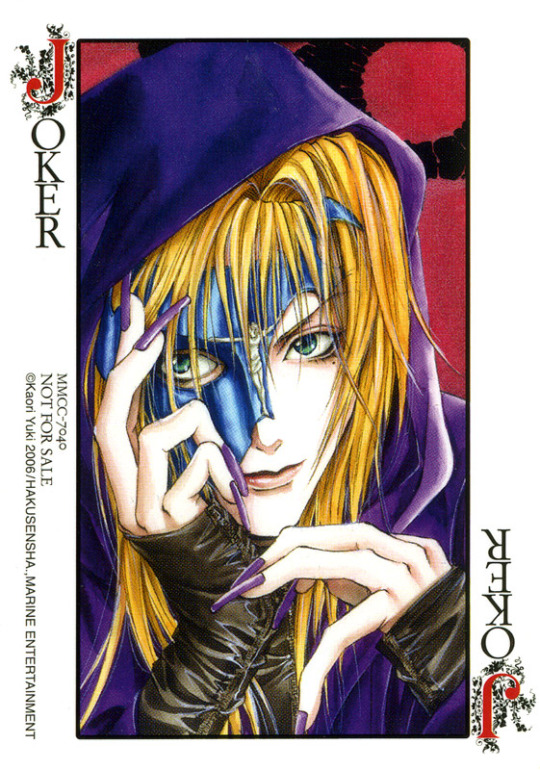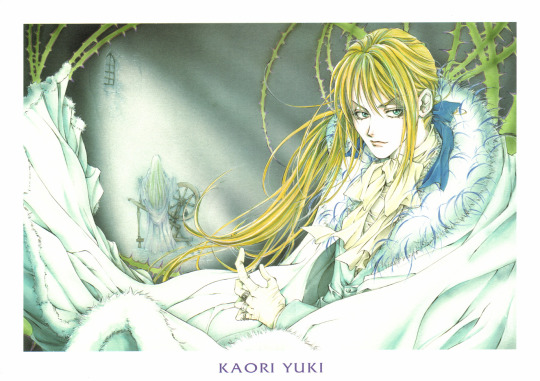#ludwig Revolution
Text




he's supposed to be the embodiment of beauty! but my hand slipped! and he came out derp! i wonder if he's even recognizable? anyway, that's supposed to be the eponymous dude from Ludwig kakumei/revolution i think the Polish version of the title "Rewolucja wg Ludwika" is the best translated thing ever cuz it obviously refers to the life with Louie cartoon
3 notes
·
View notes
Text
ROUND 1B! MATCH 8 OUT OF 8
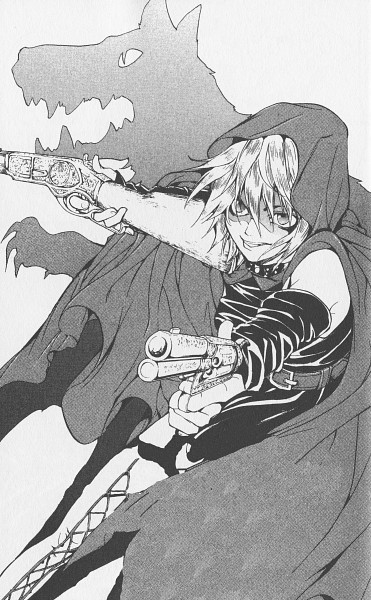
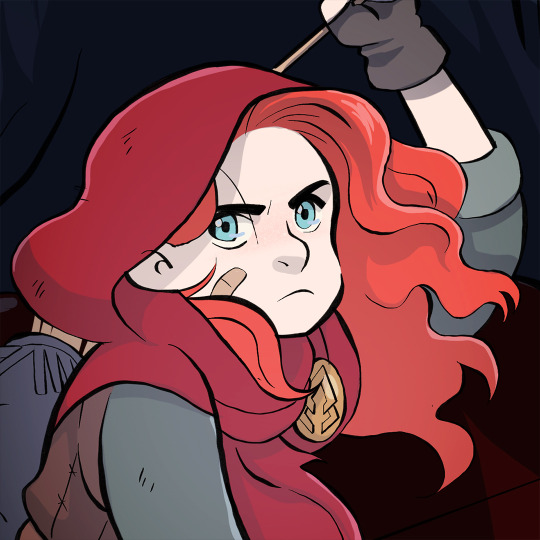
Propaganda Under the Cut:
Lisette:
They shouldn’t win.
This manga is kind of obscure (I think) which is why I think that it would be cool/funny if she won. Or at least got far in the tournament. Come on guys I know that we can do it.
Honestly I don't remember much about this manga because I haven't read it in years but I remember that she was tricked into killing her family by the main character who is like supposed to be an edgy subversion of a fairy tale prince. She's called red riding hood because her clothes are covered in blood In the course of the manga she's a mercenary that wants to get back at the main character for her parents murder.
Scarlet:
She's a feisty young girl determined to be the first female warrior (red hood) in her kingdom. Doesn't take shit from anybody, and definitely overconfident in her own abilities lol. but she'll get there. She'll do anything to protect the people she loves.
#red riding poll#round 1#round 1b#lisette#ludwig revolution#ludwig kakumei#scarlet#the red hood#gabriel santos#red riding hood#little red riding#polls#poll bracket#poll tournament#character polls#this one isn't a specific pair up i made i just didn't know who else to put these guys against#battle of the leftovers lol
13 notes
·
View notes
Note
Okay. Which Kaori Yuki character is your favourite and why? Gush as much as you like.
Oh there is so many!! (thanks for the ask!)
I really like Bloody Alice from Alice in Murderland cause she is sooo badass !!

I also really like Sorath from Devil's lost Soul. I think his father relationship with Nonoha is cute !
I also like Cain, from the Count Cain series, he is a cool protagonist.
But my absolute fav is....; LUI !!
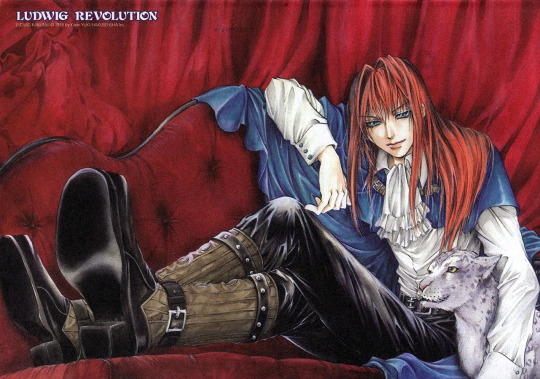
He is such a funny character even if he is the definition of "Prince Uncharming" lol. Kaori yuki never failed to make me laugh with that guy's macabre humor. Moreover, I love how his whole journey across once upon a Land is about him learning to be more then the egoistic yet clever prince he was at the begining and he ends up trying to do the best for his country !
I wish I can draw him someday (◕‿◕✿)
Thanks for the ask. Now I am curious, who is your fav anon ? nun
13 notes
·
View notes
Text
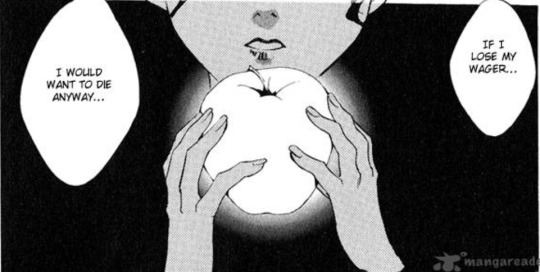
22 notes
·
View notes
Text
The most precious treasures are the ones you cannot reach.
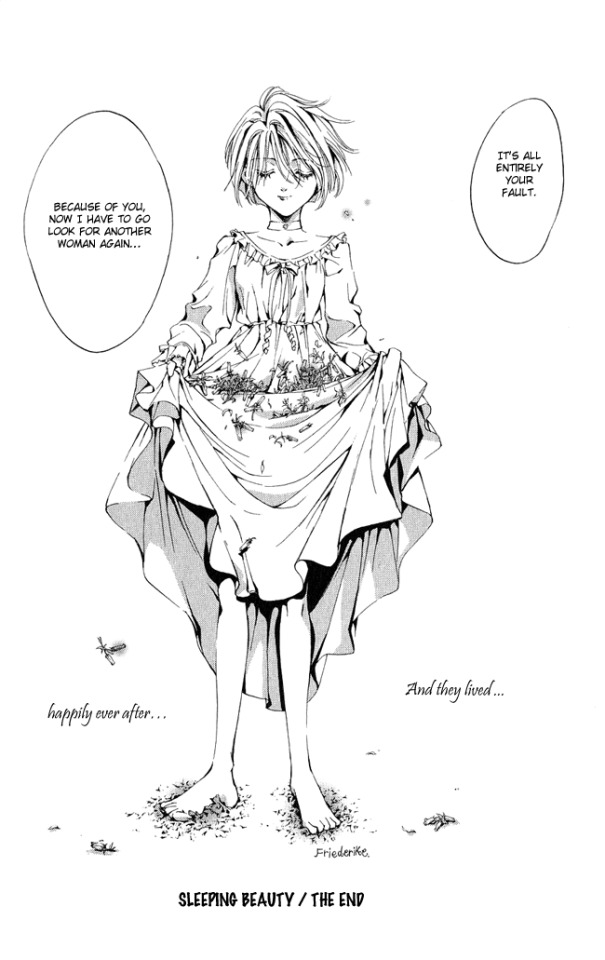
We can all agree that Sleeping Beauty is among, if not the best chapter of Ludwig Kakumei series. Not only because of its bittersweet poetic spin, but also its lasting impact on the rest of the series.
"Why are princes all nice guys in fairy tales? And princesses beautiful and pure, waiting to be rescued?" Using the premise of the original tales, the author deconstructed the conventional cliches and reconstructed her own Grimm's world with their shattered illusions.
Sleeping Beauty chapter started as it's usually told, flavored by macabre and plot twists in classic Kaori fashion. When princess Friederike was born, she received the blessings of 12 witches. The 13th witch, uninvited, was enraged. She cursed Friederike doom by a spindle on her 15th birthday. The 12th witch, not having made her blessings, twisted the curse: She wouldn't die, only fell asleep, until a true love kiss awakened her from slumber.
That's where the similarities draw to an end. Princess Friederike actually had a complex personality not cut out of cardboard. Since birth, she desperately pushed herself to be perfect in everyway, but no one acknowledged her apart from her superficial status and beauty. On her 15th birthday, her world fell apart as she discovered the blessings, coupled with parent issues, drove her to the tower to prick her fingers on the spinning wheel. She hoped she would be fine and they'd all turn out to be an ugly lie, but well, she fell asleep. Soon the castle was covered in thorns, and many years passed.
That's where our perfect and terrible prince appeared. Ludwig, handsome, cunning, and irredeemably perverted, was at the first destination of his wife-hunting journey. He found Friederike pocket watch (buried in her spiral), which became the bridge guiding their dreams to each other.
Honestly, I don't know what about Friederike moved the capricious prince's heart. The purity and vivacity of the silver-haired, bare-feet maiden playing on a bed of flowers? Fragile yet stubborn, naive yet plagued by doubts? Or was it their mutual loneliness? The harm their thorns inflicted on others - misguided attempts to protect themselves from this crapsack world? There is no doubt that the Prince saw himself in the Sleeping Beauty, though. The speech he gave to her, after hearing her story, was cruel and uncaring on the surface, while deep down he thought about himself, a child alone with his shiny toys.
Never had Friederike been loved by anyone as her true self. Never had Ludwig truly loved anyone but himself. On that fateful day, the word "never" changed into "for the first time".
Thus, he regretted hurting her - "For the first time since I was born, I hate the cruelty of my own thorns."
(In a way, it's hilarious that Friederike was the opposite of Ludwig (presumably) ideal type. He liked big cups, Friederike was an LCD. He boasted about his women collection for their quietness and obedience, Friederike was proud and animated. I get a feeling that Ludwig was actually drawn to good virtues (aside from beauty). He "loved" Blanche in her deep coma state, but soon lost interest when she woke up and revealed her vile nature. He gave up his necrophilia hobby after Blanche, also the only princess we met before Friederike. He didn't dislike Amalie, found Rapunzel more beautiful after her giving birth and working, and plenty other examples later in the story.)
Cliche or not, true love did change Ludwig for the better. When the chapter begins, he complained the thorns would damage his beautiful nails. As the story was rushing to the end, about the bleeding nails when he tried to reach his love, Ludwig spat "I won't die from a broken nail or two." - which statement completely shred away Lui's shallow and hedonistic mask. The narrative gradually shifted back to the original fantastical prompt.
The Prince overcame the thorns and delivered the true love kiss, awakening the Princess from eternal slumber.
And they lived happily ever after, till death do they parted.
The beauty of this story lies in its tragic conclusion. Despite everything, the Prince cannot get his happy ending. It served as some poetic justice, I suppose, as Ludwig had committed a lot of horrible debauchery prior to his encounter with Sleeping Beauty.
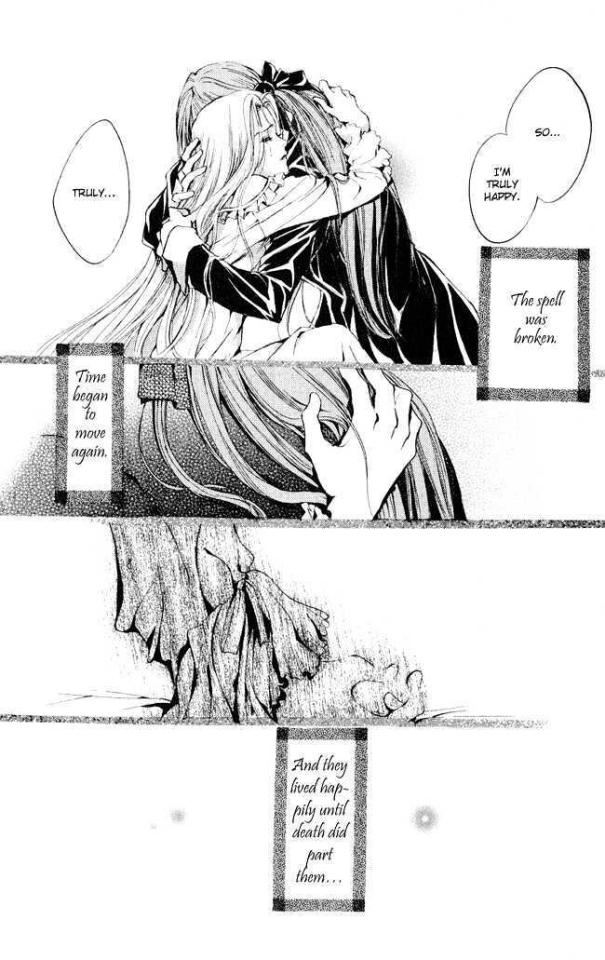
Friederike was the only person Ludwig truly wanted, and the one he could never have. She'll forever remain an illusion, an ideal, a dream he can never forget.
1 note
·
View note
Text

blond bitch bingo
#niyah.txt#idk why i put ian first tbh i've been obsessed with dio's bitch ass for almost 8 years now#but i'm also sure i was sleep deprived so ian went went first#need to get back to ludwig revolution omg it's literally everything my 12 y.o self would have loved
12 notes
·
View notes
Text
Do you guys remember that one game that made Napoleon Bonaparte & Beethoven, as well as other historical figures, as petite, cute, big chested, anime girls
I forgot the name 😭
#napoleon Bonaparte#ludwig van beethoven#Beethoven#Napoleon#napoleonic era#Napoleonic wars#frev#french revolution#frev community
10 notes
·
View notes
Text


— Gustav Landauer, from a letter to Ludwig Berndl, written c. August 16, 1915, featured in Revolution and Other Writings: A Political Reader, transl Gabriel Kuhn, (2010)
#German#Gustav Landauer#Revolution and Other Writings: A Political Reader#Gabriel Kuhn#(2010)#Ludwig Berndl
7 notes
·
View notes
Text
Wellington’s Victory being one of Beethoven’s worst pieces gives me great satisfaction
#even Wellington hated it#lmao#napoleonic era#napoleonic#first french empire#french empire#Beethoven#ludwig van beethoven#Wellington#19th century#napoleon#napoleon bonaparte#history#classical music#composers#napoleonic wars#frev#french revolution#composer#classical music composers#classical composers#1800s#text post
37 notes
·
View notes
Text
AMC's Turn robbed us of scenes with iconic Revolutionary War women like Lucy Knox or Molly Pitcher.
#revolutionary war#turn amc#lucy knox#molly pitcher#molly ludwig hays#women of the Revolutionary War#american revolution
9 notes
·
View notes
Text
Ivan and Phoebe by Oksana Lutsyshyna
Ivan and Phoebe is a novel about a revolution of consciousness triggered by very different events, both global and personal. This is a book about the choices we make, even if we decide to just go with the flow of life. It is about cruelty, guilt, love, passion – about many things, and most importantly, about Ukraine of the recent past, despite or because of which it has become what it is today.
The story told in Oksana Lutsyshyna’s novel Ivan and Phoebe is set during a critical period – the 1990s. In the three decades that have passed since gaining independence, Ukraine has experienced many socio-political, economic, and cultural changes that have yet to be fully expressed. The Revolution of Dignity in 2014 marked a pivotal moment in the country’s history, as it signaled a shift towards European integration and a strong desire to distance itself from Moscow. Prior to this, Ukrainian culture had remained overshadowed by Russian influence, struggled to compete for an audience and was consequently constrained in exploring vital issues.
77 days of February. Living and dying in Ukraine
"77 Days," is a compelling anthology by contributors to Reporters, a Ukrainian platform for longform journalism. The book, published in English as both an e-book and an audiobook by Scribe Originals.
"77 Days'' offers a tapestry of styles and experiences from over a dozen contributors, making it a complex work to define. It includes narratives about those who stayed put as the Russians advanced, and the horror they encountered, like Zoya Kramchenko’s defiant "Kherson is Ukraine," Vira Kuryko’s somber "Ten Days in Chernihiv," and Inna Adruh’s wry "I Can’t Leave – I’ve Got Twenty Cats." The collection also explores the ordeal of fleeing, as in Kateryna Babkina’s stark "Surviving Teleportation '' and "There Were Four People There. Only the Mother Survived."
It also highlights tales of Ukrainians who created safe havens amidst the turmoil, such as Olga Omelyanchuk’s "Hippo and the Team," about zookeepers safeguarding animals in an occupied private zoo near Kyiv, and one of Paplauskaite’s three pieces, "Les Kurbas Theater Military Hostel," depicting an historic Lviv theater turned shelter for the displaced, including the writer/editor herself.
In the Eye of the Storm. Modernism in Ukraine 1900’s – 1930’s
This book was inspired by the exhibition of the same name that took place in Madrid, at the Museo Nacional Thyssen-Bornemisza, and is currently at the Museum Ludwig, located in Cologne, Germany.
Rather than being a traditional catalogue, the publishers and authors took a more ambitious approach. Rather than merely publishing several texts and works from the exhibition, they choose to showcase the history of the Ukrainian avant-garde in its entirety – from the first avant-garde exhibition in Kyiv to the eventual destruction of works and their relegation to the "special funds" of museums, where they were hidden from public view.
These texts explain Ukrainian context to those who may have just learned about the distinction between Ukrainian and Russian art. Those "similarities" are also a product of colonization. It was achieved not only through the physical elimination of artists or Russification – artists were also often forced to emigrate abroad for political or personal reasons. Under the totalitarian regime, discussing or remembering these artists was forbidden. Archives and cultural property were also destroyed or taken to Russia.
"The Yellow Butterfly" by Oleksandr Shatokhin
"The Yellow Butterfly" is poised to become another prominent Ukrainian book on the themes of war and hope. It has been listed among the top 100 best picture books of 2023, according to the international art platform dPICTUS.
The book was crafted amidst the ongoing invasion. Oleksandr and his family witnessed columns of occupiers, destroyed buildings, and charred civilian cars. Shatokhin describes the book’s creation as a form of therapy, a way to cope with the horrors. "During this time my vision became clearer about what I wanted to create – a silent book about hope, victory, the transition from darkness to light, something symbolic," he explains.
Although "The Yellow Butterfly" is a wordless book, today its message resonates with readers across the globe.
A Crash Course in Molotov Cocktails by Halyna Kruk
A Crash Course in Molotov Cocktails is a bilingual poetry book (Ukrainian and English) about war, written between 2013 and 2022, based on Halyna’s experience as an author, volunteer, wife of a military man and witness to conflict.
The Ukrainian-speaking audience is well-acquainted with Halyna Kruk – a poet, prose author and literature historian. Kruk is increasingly active on the international stage, with her poetry featured in numerous anthologies across various languages, including Italian, French, Swedish, Norwegian, Portuguese, Spanish, Polish, English, German, Lithuanian, Georgian and Vietnamese.
For an English-speaking audience, her poetry unveils a realm of intense and delicate experiences, both in the midst of disaster and in the anticipation of it. The poems are succinct, direct, and highly specific, often depicting real-life events and individuals engaged in combat, mourning, and upholding their right to freedom.
133 notes
·
View notes
Text

#ludwig kakumei#ludwig revolution#manga#ludwig#shoujo#comics#manga panel#anime#shoujo manga#lovers#mangacaps
6 notes
·
View notes
Text
the young veins' instruments
note: please correct me if any of these are wrong! i unfortunately know almost nothing about guitars but i just think it's interesting/sweet to see how the 60s influences and inspirations extend to the guitars the young veins chose. i also like how it seems that ryan gave jon a couple of his old guitars!
Ryan
Epiphone "John Lennon Revolution" Casino Electric Guitar: John Lennon's guitar of choice during the later years of the Beatles. The model Ryan plays here was sold as a limited edition reproduction of Lennon's guitar (I think in 2009).

Jon
Fender Custom Shop Stratocaster NOS in Sunburst: Fender Stratocasters were hugely popular during the 1960s and have a very distinctive retro look. Jon's custom Stratocaster here looks very visually similar to a model played by George Harrison. The museum picture is from an exhibition at the National Music Museum in Bologna, Italy, where Sunburst Fender Stratocasters owned by Harrison were displayed.

Fender American Stratocaster in Surf Green: another classically 1960s model and the same guitar Ryan was playing during much of the Pretty Odd era. Possibly Jon borrowed it from him?

Rickenbacker 360 Electric Guitar in Jetglo: Rickenbacker guitars were used by many 1960s/70s stars, but most notably by John Lennon. Ryan also played a black Rickenbacker during the Pretty Odd era, which again he may have given to Jon for the Young Veins.

Rickenbacker 360 Electric Guitar in Fireglo: Jon also played an orange/red Rickenbacker that looks similar to those played by Carl Wilson (of the Beach Boys) and George Harrison.

Andy Soukal
Custom Höfner bass: a model of bass most famously played by Paul McCartney.

Nick Murray
1968 Ludwig drum set in White Marine Pearl: a make of drums very heavily associated with Ringo Starr, who had a black oyster pearl set.

Nick White
Korg Stage Vintage 1 Keyboard: an electric keyboard designed to look and sound authentically retro.

23 notes
·
View notes
